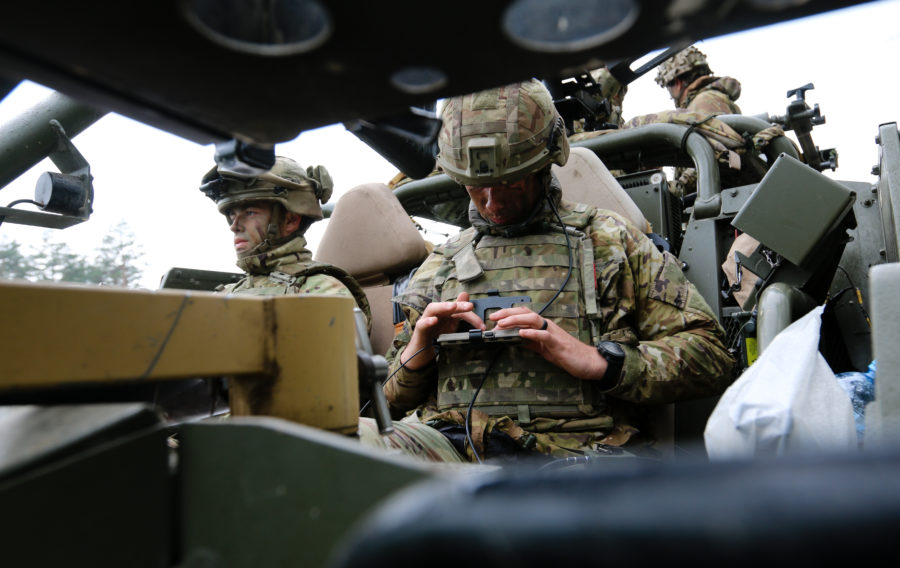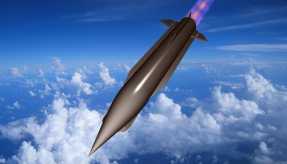
Some have theorised that breakthroughs in autonomous and remote systems will render the contemporary soldier obsolete. This is the age of drone warfare after all, where complex operations can be carried out at arm’s length. More likely, however, is that the infantryman of tomorrow will be augmented by an increasingly sophisticated complement of innovative new technology.
You may remember the Ministry of Defence’s Future Soldier Vision (FSV), unveiled in September 2015, which outlined in detail how technology would redefine the capabilities of troops over the coming decade. A loose concept, informed by in-depth military research and emerging trends in commercial technology, was created as part of the FSV to illustrate how the dismounted soldier might be outfitted from 2020 onwards.
This concept gave fascinating insight into the battlefield of the future, and underscored the many ways in which consumer-grade technology continues to innovate the defence sector as a whole.
There were head sub-systems which incorporated hearing protection and lightweight sensors for information-sharing, each with integrated power supplies. Torso sub-systems combined segmented and highly customisable body armour with flexible shoulder pads to bolster weight distribution, with quick-release cords for emergency situations.
Unsurprisingly, smart technology featured prominently throughout. Wearable communication took the form of a smartwatch equivalent, able to monitor the user’s biometric data by way of a discrete array of inbuilt sensors. A variant of the smart glasses concept could also provide the dismounted soldier with a heads-up display akin to augmented reality, with integrated cameras and bone-conducting headphones helping to maintain situational awareness without impairing vision or hearing.
Already, rugged devices are enabling information to be communicated efficiently between personnel in the most extreme weather conditions, and in the future customisable and ergonomically designed weapons will beam targeting information back and forth between soldiers and their units, allowing them to share target data during skirmishes.
It’s a vision of a better-connected future, then; one in which survivability, enhanced situational awareness and network capabilities are all integrated. Protection technology will be built in from the ground up, alongside reams of sensors for information-sharing and a network of power and data connectors.
“The Future Soldier Vision concept provides the MOD and industry with an aim point for what the soldier could look like a decade from now,” a spokesperson for the Defence Science and Technology Laboratory (Dstl) said. “It provides a platform to challenge what this future could be and how industry and academia could help the MOD to make it a reality.”
Dstl has since doubled down on those sentiments, having undertaken a host of similar studies in the very recent past. One such innovation – the Dismounted Close Combat Sensor – assists navigation when GPS is unavailable, and is expected to be rolled out over the course of 2020. As conflicts shift into built-up urban environments, GPS positioning can often be lost, leaving soldiers at a considerable disadvantage. But sensor technology will enable troops to shore up their own situational awareness and share positional data with the rest of their squad.
More recently, wearable electronics and the novel concept of smart textiles have risen to the fore. According to Dstl, super-thin materials could outfit the front line with solar-panelled shirts and in-built data storage without weighing the dismounted soldier down. The textile itself, known as molybdenum di-telluride, is part of an exciting family of graphene-based 2D materials that have countless applications across the defence spectrum.
According to Nicola Townsend, who is currently researching super-thin materials as part of her PhD at the University of Exeter: “Graphene was only successfully isolated and measured 14 years ago, and this sparked global interest in 2D materials. We’re only now starting to scratch the surface by looking into finding and exploiting these new materials. We’re working our way to mass production, but we can already see that this area has a huge potential.”
Predictably, where technology is involved, cost is a potential stopping point. Here, the role of the consumer market in driving the development of innovative and relatively inexpensive technology is absolutely critical, even if the technology itself isn’t always a natural fit. More and more, the defence sector looks to the consumer market for inspiration, as emerging technologies are cherry-picked, made more secure and ruggedised for frontline combatants.
It’s safe to say that the dismounted soldier is undergoing fundamental change, with roles and capabilities redefined. The hope now is that, through a programme of continued innovation and investment, Britain’s ground forces can keep pace with the cutting edge.
image © Crown Copyright
If you would like to join our community and read more articles like this then please click here.







